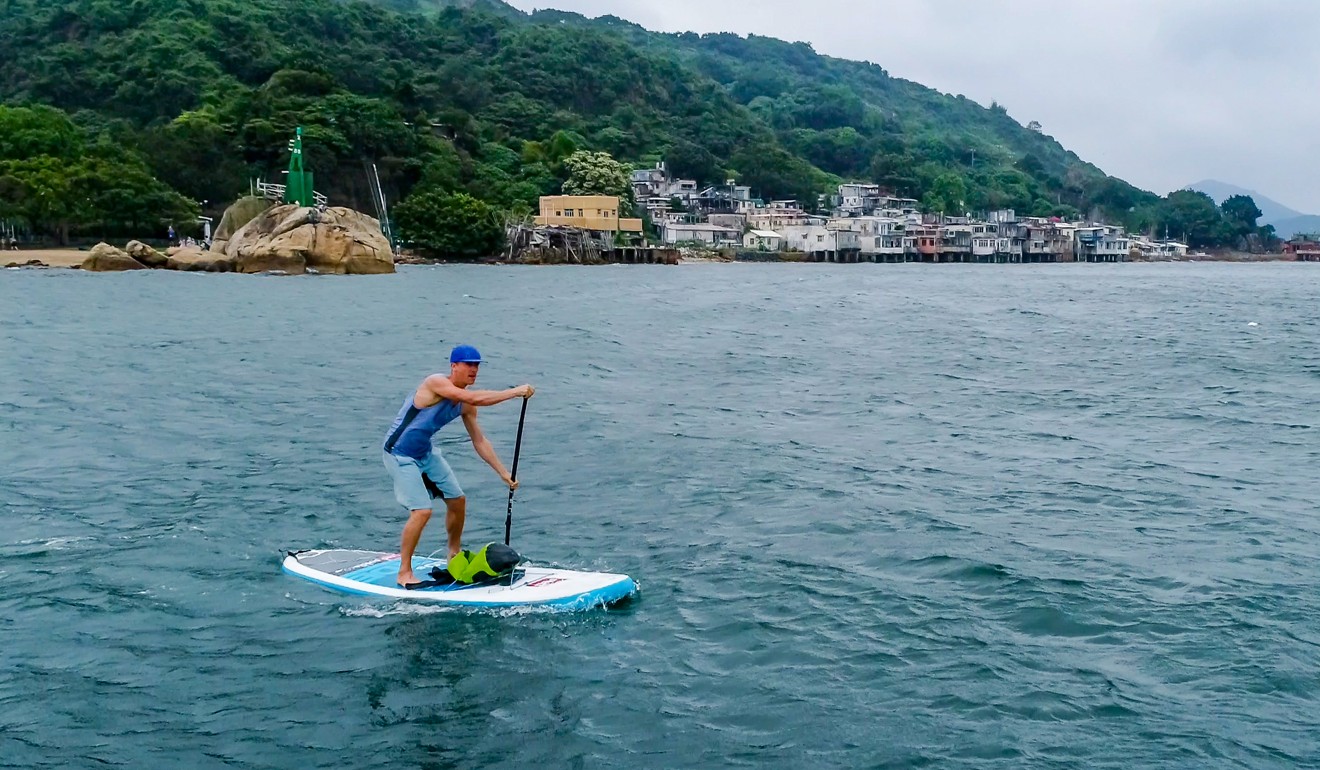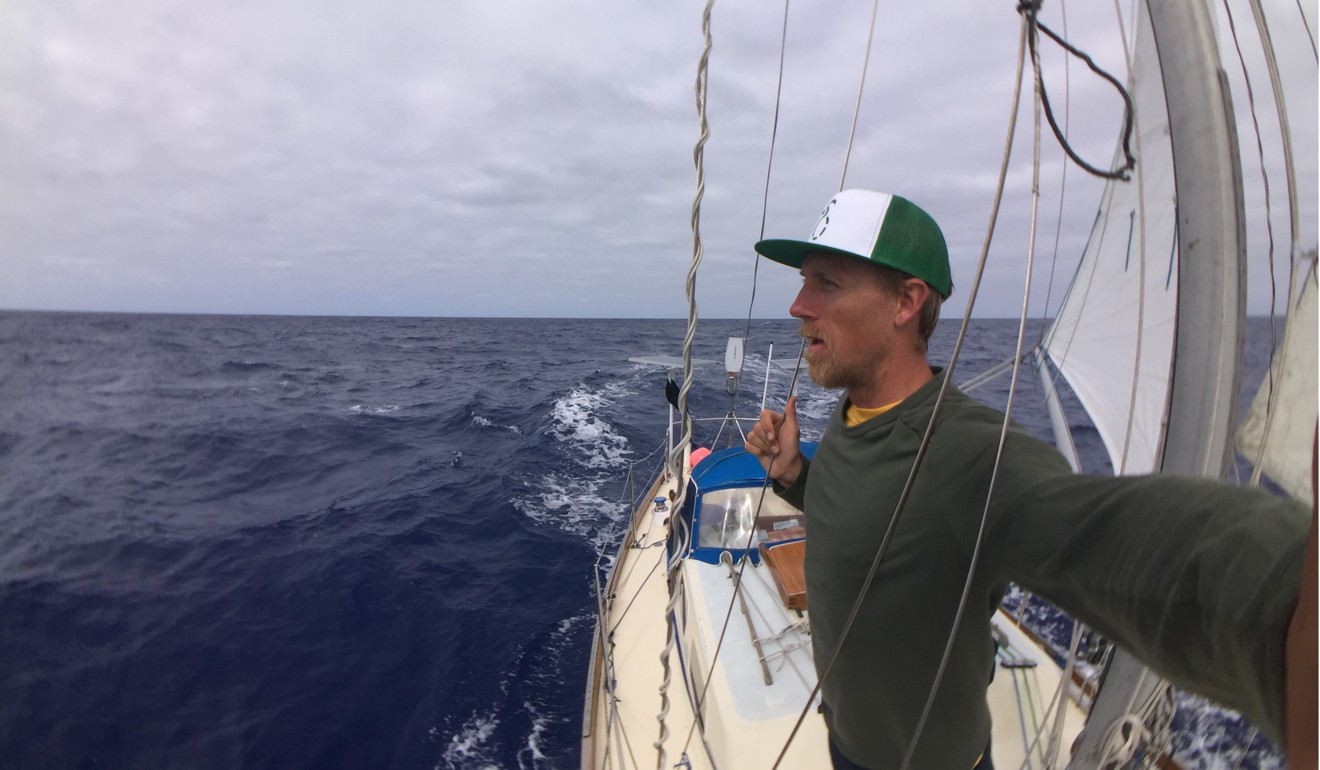
Hong Kong’s escalators – and its border with China – prove tricky obstacles for adventurer travelling the world without motors
Markus Pukonen canoed, walked, biked and pogoed across America, then sailed the Pacific, but Hong Kong is throwing up new challenges
Markus Pukonen canoed, walked, biked and pogosticked across North America, then sailed across the Pacific to Hong Kong.
That seemed like the hard part done, so why was he late for our meeting although he had found the coffee shop? And why is a moving staircase an obstacle for a seasoned extreme traveller?
Canadian Pukonen is two years into a five-year trip travelling the globe without a motor to show the world it does not need fossil fuels.
“I can’t even use the escalator, that counts as a motor,” he said.
The trip, dubbed ‘Routes of Change’, which started in the wake of his father’s tragic death, has already seen him take all manner of transport, including bikes, paddle boards and boats. He intends to use every mode of transport possible, even paragliding. In Canada, he pogosticked for 10km.
Pukonen’s commitment to his motorless life knows no bounds. He is staying in Sai Kung, but to meet on Hong Kong Island, he had to cycle to the Kowloon harbourfront and then stand-up paddle board across Victoria Harbour.

A tragic catalyst for the trip
Pukonen worked as a forest fire fighter, and travelled in the off-season. He enjoyed his job, and described it as “the dream”. But the more he travelled, the more guilty he began to feel about the conditions of people in the third world.
“I started feeling responsible for it, but I did not want to sacrifice my way of life too much. So I started looking at everything I was passionate about and how I could combine it,” the 34-year-old said.
Surf Ski World Championships are heading to Hong Kong in 2017, but organisers need HK$5 million government support
Then, Pukonen’s father was diagnosed with aggressive leukaemia and given two weeks to live.
“I’ve got to stop wasting my time doing something I’m not passionate about because who knows when it will end,” he thought as he travelled to visit his dying dad.
So, his passion for outdoor sports, adventure, film making and the environment manifested themselves in Routes of Change.

Rowing the Atlantic
Pukonen’s initial idea was to travel the world under human power only, which would exclude the use of even wind. He began to look into rowing the Pacific Ocean. He contacted a team of ocean rowers and asked to rent their boat, but they had trips of their own planned.
The rowing team invited him to join their row around Vancouver Island, and after they completed the trip, they asked Pukonen to join their attempt to row across the Atlantic.
The team planned to be the first people to row from Africa to North America, starting in Dakar and ending in Miami. About 4,800km into the 5,800km journey, disaster struck. A wave hit just as the rowers were changing shift, so the cabin door was open.
Canadian wingsuit jumper dies in China’s Hunan province, says report
Ocean rowing boats tend to self right themselves if they capsize, but not if the door is open.
“So the wave came, and the boat flipped. We were thrown into the water in the Bermuda triangle! We let off beacons. The US coastguard showed up in planes first. After six hours the plane overhead diverted the nearest ship to us,” Pukonen said.
When Pukonen first left Toronto to start his Routes of Change journey, he was still unsure how he would cross the Pacific. After a few weeks of travelling, he was offered a place on a sailing boat from San Francisco to Hong Kong, and also a place on a rowing boat from California to Hawaii.
He chose the former because it was going the whole way, and the memory of ocean rowing was still fresh in his mind so the comfort of sailing was too alluring.

Hong Kong’s only half way
Pukonen wants to cycle out of Hong Kong and into China, but he has heard that the border can be difficult for cyclists. There’s rumours that to cross the border, officials put cyclists on buses.
Pukonen has been talking to Humphrey Wilson, founder of cycling adventure company Mad Dogs, who cycled from the United Kingdom to Hong Kong, for advice.
“I might have to sail to Macau. I’d still have to get to Macau though.” Pukonen semi-joked that he may have to simply push his bike over the Chinese border and ignore the inevitable protests from border officials. He heard from Wilson that it worked for another cyclist entering Hong Kong, but it’s a risk to rely on hearsay.
Six-year-old trail runner shows up her dad in family kayak ‘n’ run race
From China, Pukonen intends to go to Vietnam and then cycle north to Laos. But he is flexible and not committed to any particular route.
“In October 2018, I hope to be in the Himalayas. I want to learn how to paraglide. That’s the transport I’m most looking forward to. I’m gonna set up in camp in Pokhara [a Nepalese city in the shadow of the Himalayas] for three months and learn.
“I’ll try to get as far as I can paragliding. Climb, launch, climb, launch, all the way to China. And then from there on to Kyrgyzstan. I’m hoping the Chinese authorities let me follow the old silk road and cross the boarder into Kyrgyzstan.”

What can Hong Kong learn from Routes of Change?
Hong Kong needs to become more cycle friendly, Pukonen .
“Very few people ride bikes in this city. I think cycling is the future. Whether it’s electric bikes or completely man powered, it just makes sense, especially in cities,” said Pukonen, suggesting ways in which people in Hong Kong can help reduce the city’s carbon footprint.
“There are not enough bikes on the road and that’s why it’s not cycle friendly. It is a bit dangerous at times, but the more bikes on the road, the more likely cyclists are to get their own lane.”
Ex-Hong Kong rugby player Adam Rolston embarks on 14,000-shot golf odyssey for charity, adventure and a world record
Pukonen said citizens can help put pressure on the government to make the city more accessible for cyclists and to reduce its coal consumption by simply making their voices heard. For example, by sending letters to government officials.
“I don’t know the intricacies of the Hong Kong government,” he said. “But I do know making yourself heard goes a long way.
“For example, the Hong Kong Cycling Alliance is a small group but they’ve already made changes. Like, you can now bring your bike on the MTR.”

